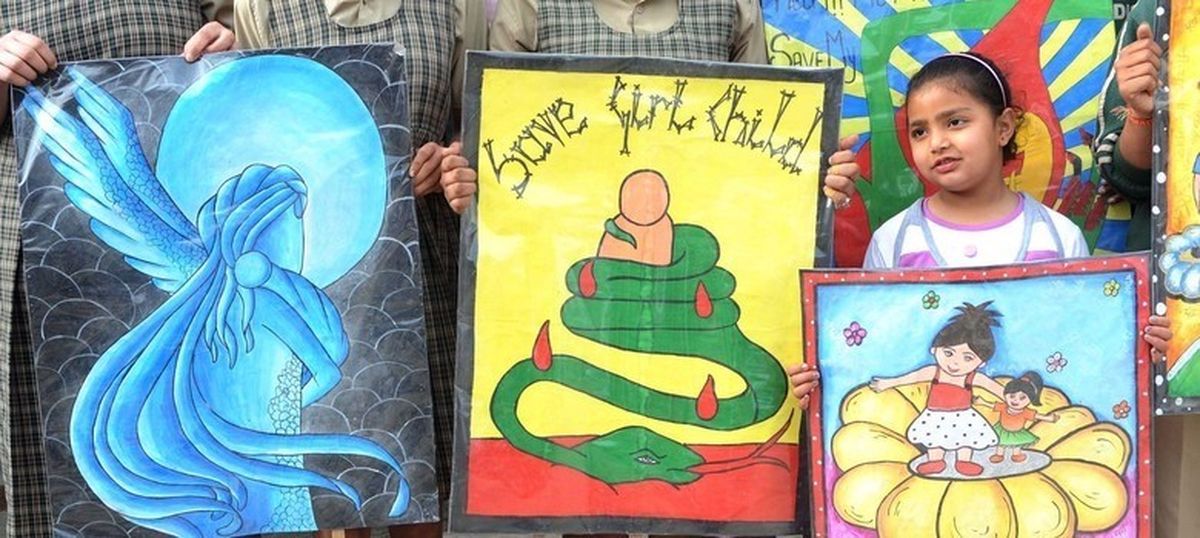India’s sex ratio at birth – the number of girl children born for every 100 boys – has normalised slightly, a study by the Pew Research Center showed on Tuesday.
Citing data from the National Family Health Survey 2019-’21, the study said that the sex ratio at birth narrowed from 109 boys per 100 girls in 2015-’16 to 108 boys per 100 girls in 2019-’21.
In the 2011 census, the gap in India’s sex ratio was higher, at 111 boys per 100 girls.
“To put the recent decline in sex selection into perspective, the average annual number of baby girls ‘missing’ in India fell from about 4.8 lakh in 2010 to 4.1 lakh in 2019,” the report of the non-profit think tank said.
The phrase “missing women” refers to the millions of girls killed before or right after being born because of a societal stigma to giving birth to a daughter.

According to the report, boys modestly outnumber girls at birth at a ratio of approximately 105 male babies for every 100 female babies naturally. This was also the case in India before prenatal sex tests became available.
“Abortion was legalised in the country in 1971,” the report said. “Once prenatal testing allowed Indian families to learn the sex of a fetus during pregnancy, sex selection took off.”
Further, the introduction of ultrasound technology in the 1980s made it easier for families to determine the sex of the unborn child. Sex selection was banned in 1994.
“The sex ratio at birth widened rapidly from about 105 boys per 100 girls before 1970, to 108 boys per 100 girls in the early 1980s,” the American think tank said in its report. “It reached 110 in the 1990s and remained at that level for roughly 20 years.”
Disparity in Sikh community
The Pew Research Center report said that the sex ratio at birth within the Sikh community was gradually moving toward its natural level. This holds significance since the community had a particularly large imbalance of baby boys to girls in previous decades.
“In the 2001 census, Sikhs had a sex ratio at birth of 130 males per 100 females, far exceeding that year’s national average of 110,” the report noted. “By the 2011 census, the Sikh ratio had narrowed to 121 boys per 100 girls. It now hovers around 110, about the same as the ratio of males to females at birth among the country’s Hindu majority [109].”
The sex ratio between Christians was recorded close to the natural norms at 105 boys to 100 girls and for Muslims at 106 boys to 100 girls.
Experts advise caution
Meanwhile, experts said they were cautious about the data as the National Family Health Survey 2019-’21 covered only about 6,30,000 out of 300 million households in India.
Researcher and activist Sabu George said that the true picture will be known only after the census, which counts the entire population and provides a more accurate account, the BBC reported.
“The one-point reduction from NFHS-4 to NFHS-5 is only a slight improvement,” George said. “To call it normalisation is an exaggeration, a distortion.”
He added that the data was collected at a time when the country was facing the Covid-19 pandemic.
Amit Kumar, a gender researcher based in Punjab, claimed that despite the decline, he finds little change in the attitudes on the ground.
“If you ask people a direct question they will always deny that they discriminate between boys and girls,” he told the BBC. “But if you probe deeper, you find the son preference very much exists.”
Buy an annual Scroll Membership to support independent journalism and get special benefits.

Our journalism is for everyone. But you can get special privileges by buying an annual Scroll Membership. Sign up today!
